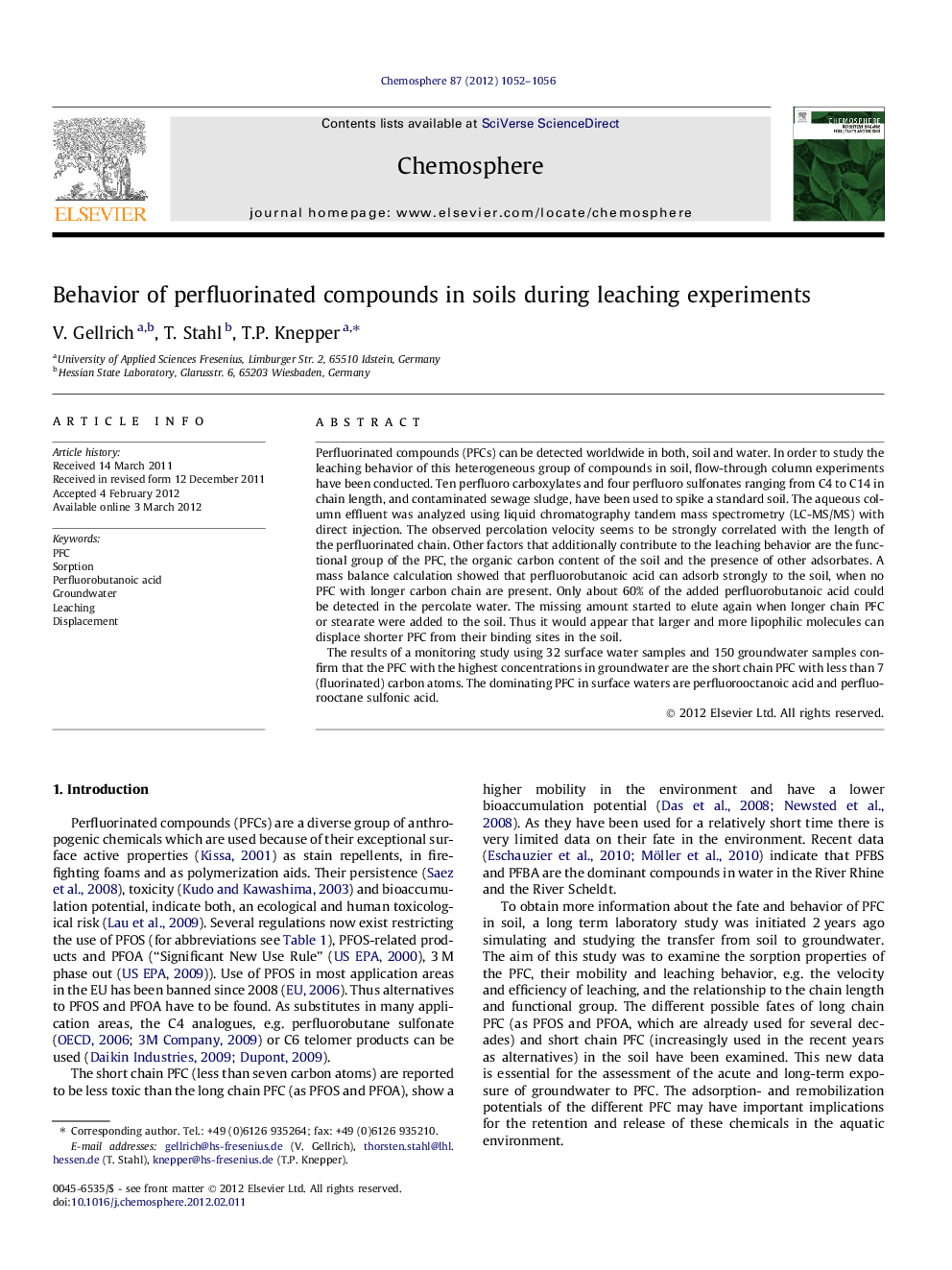| Article ID | Journal | Published Year | Pages | File Type |
|---|---|---|---|---|
| 6311284 | Chemosphere | 2012 | 5 Pages |
Perfluorinated compounds (PFCs) can be detected worldwide in both, soil and water. In order to study the leaching behavior of this heterogeneous group of compounds in soil, flow-through column experiments have been conducted. Ten perfluoro carboxylates and four perfluoro sulfonates ranging from C4 to C14 in chain length, and contaminated sewage sludge, have been used to spike a standard soil. The aqueous column effluent was analyzed using liquid chromatography tandem mass spectrometry (LC-MS/MS) with direct injection. The observed percolation velocity seems to be strongly correlated with the length of the perfluorinated chain. Other factors that additionally contribute to the leaching behavior are the functional group of the PFC, the organic carbon content of the soil and the presence of other adsorbates. A mass balance calculation showed that perfluorobutanoic acid can adsorb strongly to the soil, when no PFC with longer carbon chain are present. Only about 60% of the added perfluorobutanoic acid could be detected in the percolate water. The missing amount started to elute again when longer chain PFC or stearate were added to the soil. Thus it would appear that larger and more lipophilic molecules can displace shorter PFC from their binding sites in the soil.The results of a monitoring study using 32 surface water samples and 150 groundwater samples confirm that the PFC with the highest concentrations in groundwater are the short chain PFC with less than 7 (fluorinated) carbon atoms. The dominating PFC in surface waters are perfluorooctanoic acid and perfluorooctane sulfonic acid.
⺠Flow-through column experiments were conducted to study leaching behavior of PFC (perfluorinated compounds). ⺠The analytes were detected in the aqueous column effluent utilizing liquid chromatography - tandem mass spectrometry. ⺠The observed percolation velocity seems to be strongly correlated with the length of the perfluorinated chain. ⺠A thorough sampling campaign had been performed in order to compare the occurrence with the model data.
